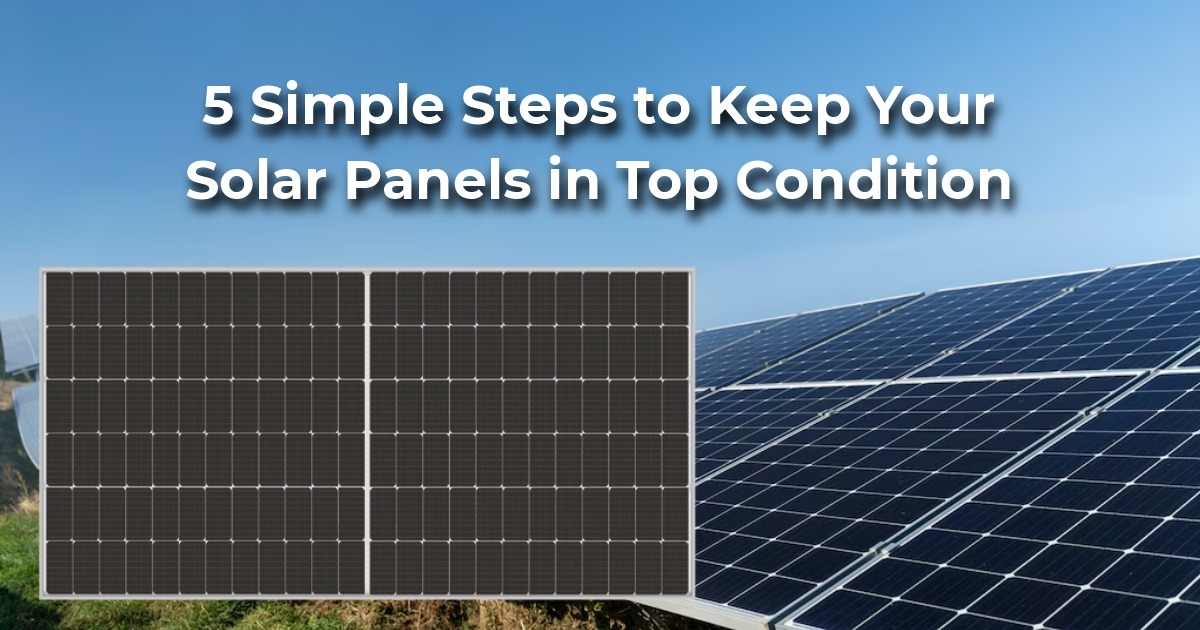
Solar panels are a long-term investment that helps you generate clean, renewable energy for your home or business. However, to ensure maximum efficiency and longevity, regular maintenance is crucial. Well-maintained solar panels perform at their best, maximizing energy production and reducing the chances of power losses. In this guide, we will discuss five simple steps to keep your solar panels in top condition while also understanding the role of a solar inverter in maintaining an efficient solar power system.
One of the simplest yet most important maintenance tasks for solar panels is regular cleaning. Over time, dust, dirt, leaves, bird droppings, and other debris can accumulate on the panel’s surface, reducing their efficiency. A layer of grime can block sunlight from reaching the photovoltaic cells, leading to decreased power generation.
The frequency of cleaning depends on your location. If you live in a dusty or polluted area, clean the panels every 2-3 months. In areas with regular rainfall, natural cleaning is sufficient, and you may only need to clean them twice a year.
Solar panels are built to withstand harsh weather conditions, but external factors like storms, hail, or falling branches can cause physical damage. Regularly inspecting your panels ensures that you identify cracks, loose wiring, or any other signs of wear and tear before they become bigger issues.
If you notice any damage, contact a professional solar technician for repairs. Never attempt to fix solar panels yourself unless you have the proper knowledge and tools.
The solar inverter is a crucial component of your solar energy system. It converts the direct current (DC) generated by your panels into alternating current (AC), which is used to power your home appliances. If your inverter is not functioning properly, your solar panels will not be able to supply electricity efficiently.
If your inverter shows signs of malfunctioning, such as reduced energy production or error messages, contact a solar expert immediately. A faulty inverter can significantly impact the performance of your entire solar system.
Shading can greatly affect the efficiency of solar panels. Trees, buildings, or other obstructions that cast shadows on your panels reduce the amount of sunlight they receive, which in turn lowers their power output.
By keeping the surrounding area clear, you can ensure that your solar panels absorb the maximum amount of sunlight throughout the day.
While basic cleaning and monitoring can be done by homeowners, scheduling a professional solar panel maintenance check-up once or twice a year is highly recommended. Professionals have the expertise to detect hidden issues that may not be visible during a general inspection.
Professional maintenance not only increases the longevity of your solar panels but also helps optimize energy production, ensuring you get the most out of your solar investment.
Maintaining your solar panels is essential for maximizing energy efficiency and ensuring long-term performance. By following these five simple steps—cleaning regularly, inspecting for damage, monitoring your solar inverter, keeping the surroundings clear, and scheduling professional maintenance—you can enjoy uninterrupted solar power for years to come.
If you want your solar system to function at its best, paying attention to both the panels and the solar inverter is crucial. A well-maintained system will not only help reduce electricity bills but also contribute to a sustainable and eco-friendly future.
Invest in proper solar panel maintenance today and enjoy hassle-free, renewable energy for your home!